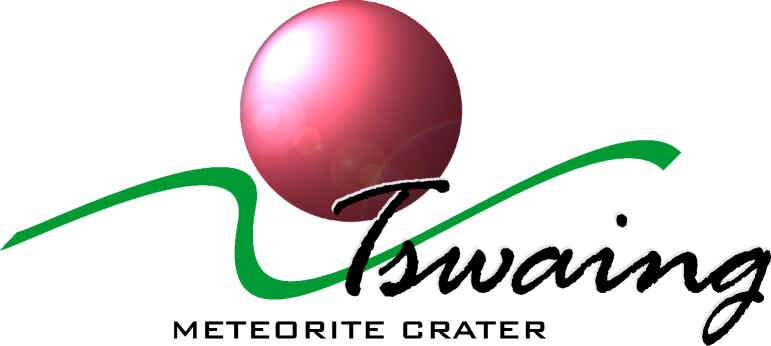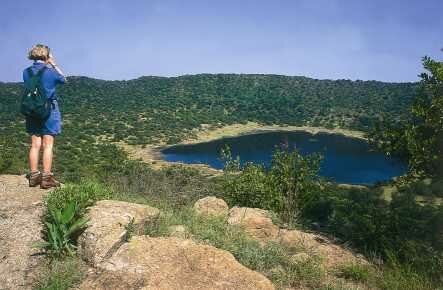|
Hiker on crater rim (courtesy National Cultural History Museum) |
 |
|
Tswaing As A Heritage Site |
|
|
|
The National Cultural History Museum took over the use of the site in January 1993. It was the combination of the geological, biological and cultural importance of the crater and the surrounding area that led to the decision to have the National Cultural History Museum's management take over the use of Tswaing, although the site remained the property of the national Department of Public Works. This arrangement was possible due to the fact that the National Cultural History Museum was a cultural institution funded by national government, but otherwise managed as a parastatal organisation. Some of the other museums operated by this organisation are also the property of the national Department of Public Works. Until 1999 the Tswaing Crater Museum operated as one the satellite museums of the then National Cultural History Museum. It had its own staff, basically consisting of a Manager (Curator), a Farm Manager, an Education Officer, and maintenance, security and farming staff. The head office staff of the National Cultural History Museum rendered most of the other services. Important achievements during the period 1993-1999 included:
On 30 March 1996 Dr B Ngubane, Minister of Arts, Culture, Science and Technology, officially opened the Tswaing Crater Museum.
During the year 2001 Tswaing entered a new era in its development with the formalising of a public-public partnership between the NFI and the Gauteng Nature Conservation Directorate, in terms of which the latter would erect a Bonnox game fence around the property and relocate excess game from Defence Force areas. A similar partnership between the NFI and the City of Tshwane Metropolitan Municipality was also developed, whereby the latter would fund the development and upgrade of the infrastructure. |
| All intellectual property rights, including but not limited to copyright and trademarks, vested in the material contained on the NFI website is held by the NFI and may not be copied, reproduced, adapted, published or distributed in any form whatsoever without the prior written consent of the responsible person at the NFI. | |
